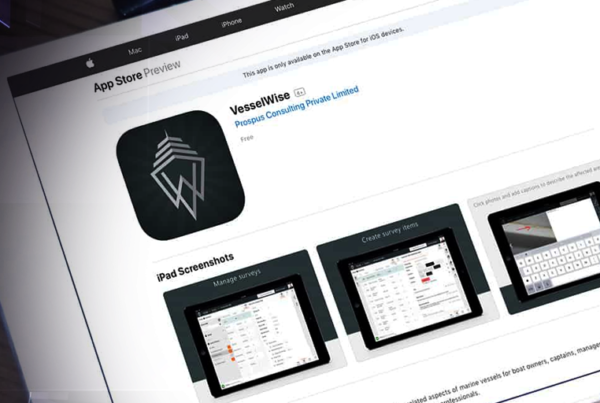In this article, we look to highlight how signals are transmitted to and consumed by an average user. We will try to understand how the average user inventories the signals he receives and processes them in an average month.
Background
We are inundated with signals. Every month we receive messages many hundred, even thousands of messages from a variety of sources such as personal and work emails, social network alerts, text and instant messages. They come to us on our phones, tablets, laptops, desktop computers, wearable devices and any number of other electronic devices. There are also the physical messages that arrive through the postal mail: bank statements, bills, voting materials, newspapers, announcements, advertisements and so on. Some of these messages are invited and welcome, while others are not, but the reality remains that the average connected individual is inundated by messages without an effective means for organizing, filtering and consuming the messages they receive.
In 2010, Eric Schmidt famously commented that every two days we create as much new information as we did from the beginning of civilization through 2003. That will surely translate into an increased load of messages, interfaces, and signals being transmitted between users and devices across a multitude of dimensions. And with the growth of the internet, as Eric Schmidt recently commented, the internet may simply ‘disappear’. This is because with literally everything being connected, we’ll stop thinking of the internet as something that exists on a computing device like a PC or phone.
So with more and more information about us going up on the web and getting collected by businesses (whether within our knowledge or otherwise), these signals are bound to increase. This leaves us with a serious problem – with so much being pushed down to us every minute, we are likely to miss some important and useful signals. Likewise, from the businesses and service provider’s point of view, that poses a serious challenge as signals have to be made more targeted, specific and useful.
The Problem
We are increasingly overwhelmed by the signals we receive every day. We wake up every morning to find our personal inbox full of emails, adverts, promotions, integrated email alerts from our various social networking accounts, notifications from activity feeds on our social accounts, Instant Messages, business emails and so forth. There are far more messages than we actually really need to make actionable use of. Again, there are two ends to this problem:
From the Consumer’s point of view – a lot of personal information about us, including our behavior, consumption patterns etc (on the internet) is out there. And yet, this information is scattered and fragmented so much that we still end up providing the same information for performing different actions simply because information is not centralized.
From the businesses or service provider’s point of view – there is already far too much information and data to deal with. How businesses will be able to process this already available data, and which continues to grow still in volume, velocity, and variety, to derive actionable insights for accurate decision-making is a growing concern amongst information managers and marketers.
Below are some key facts:
- Email is still the killer app.
- Personal email accounts worldwide outnumber corporate email accounts. In 2014, the total number of email accounts worldwide is said to be 4116 million (974 million business email accounts (24%) and 3142 million consumer or personal email accounts (76%)).[1]
- Business email accounts are expected to grow at an average annual growth rate of about 5% over the next four years and reach over 1.1 billion by the end of 2017 (23% of worldwide email accounts). The majority of business email accounts will be deployed on-premises with the adoption of Cloud business email services, such as Google Apps and Microsoft Office 365.[2]
- However, the consumer email accounts (currently accounting for 76% of worldwide email accounts in 2013) is expected to decrease over the next four years. Consumers are now opting for various other messaging apps, mobile IM and social networking sites with instant messaging. By 2017, the number of business emails sent and received per day will increase by 7% from 2013 figures (100.5 billion) to 132.1 billion and the number of consumer emails sent and received per day will see a decline by -4% (from 2013 figures- 82.4 billion) and is expected to be 74.5 billion.[3]
Based on research findings:[4]
- Social Networking will grow from about 3.2 billion accounts in 2013 to over 4.8 billion accounts by the end of 2017. The majority of social networking accounts still come from the Consumer space, however, business-oriented Enterprise Social Networks are also showing strong adoption.
- In 2013, 182.9 Billion Emails were Sent/Received Per Day Worldwide.
- 4.9 Billion Worldwide Email Accounts Expected By 2017. The number of worldwide email accounts is expected to increase from 3.9 billion email accounts in 2013 to 4.9 billion accounts by the end of 2017, with an average annual growth rate of about 6% over the next four years, according to Email Statistics Report- Radicati Group.
- By 2017, the number of business email accounts are expected to be 1138 million (23% of worldwide email accounts) and the consumer or personal email accounts are expected to be around 3782 million (77% of worldwide email accounts).
Discussion
The number of channels via which we send and receive signals in an average month is growing. Consequently, the corresponding signals and messages we receive also continue to grow. Internet protocol-based emails continue to rise – these include work and personal emails. New workforce trends such as BYOD are likely to further fuel exchange of signals, especially via the handheld form factor.
Instant Messages (IMs) via social networks are on the rise as a way of transmitting messages. This is a result of the growing popularity of Social Networking portals (such as Facebook, Twitter, Google+ etc.), and chat/texting applications (such as Skype, WhatsApp, Viber etc.).
The technology world is now exploring the possibility of connecting billions of devices and things to create an interconnected world powered via the web. It could allow the user the option of being online and traceable at all times. Here, again, the questions arise: what impact will it have on the average user? The number of signals he receives will go up incrementally – how will users use these signals effectively? We must also look at this from the businesses’ and marketers’ perspective – connectivity will lead to the emergence of a new generation of consumers, who demand new products and services based on ubiquity and interconnection: what would it take for service providers be able to send accurate signals?
Signals are bound to grow with greater internet proliferation and the growth of more internet-enabled devices including mobile form factors such as handheld computing devices (phones and tablets) and wearable tech. The technology world is now progressing to the idea of ubiquitous computing whereby billions of devices and things will interact in a connected world. What impact would it leave on the average user? With limitless signals flying around, how users will be able to recognize, receive and consume the right messages, in a more organized and efficient manner is the concern we will need to address.
Citations
- THE RADICATI GROUP, INC; Email Statistics Report, 2013 – 2017. .http://www.radicati.com/wp/wp-content/uploads/2013/04/Email-Statistics-Report-2013-2017-Executive-Summary.pdf Accessed: Monday, Feb 2nd, 2015
- sourcedigit.com: How Much Email Do We Use Daily? 182.9 Billion Emails Sent/Received Per Day Worldwide. http://sourcedigit.com/4233-much-email-use-daily-182-9-billion-emails-sentreceived-per-day-worldwide/ Accessed: Monday, Feb 2nd, 2015
- sourcedigit.com: How Much Email Do We Use Daily? 182.9 Billion Emails Sent/Received Per Day Worldwide. http://sourcedigit.com/4233-much-email-use-daily-182-9-billion-emails-sentreceived-per-day-worldwide/ Accessed: Monday, Feb 2nd, 2015
- Radicati Group Inc., Email Statistics Report, 2013 – 2017. .http://www.radicati.com/wp/wp-content/uploads/2013/04/Email-Statistics-Report-2013-2017-Executive-Summary.pdf Accessed: Monday, Feb 2nd, 2015
































